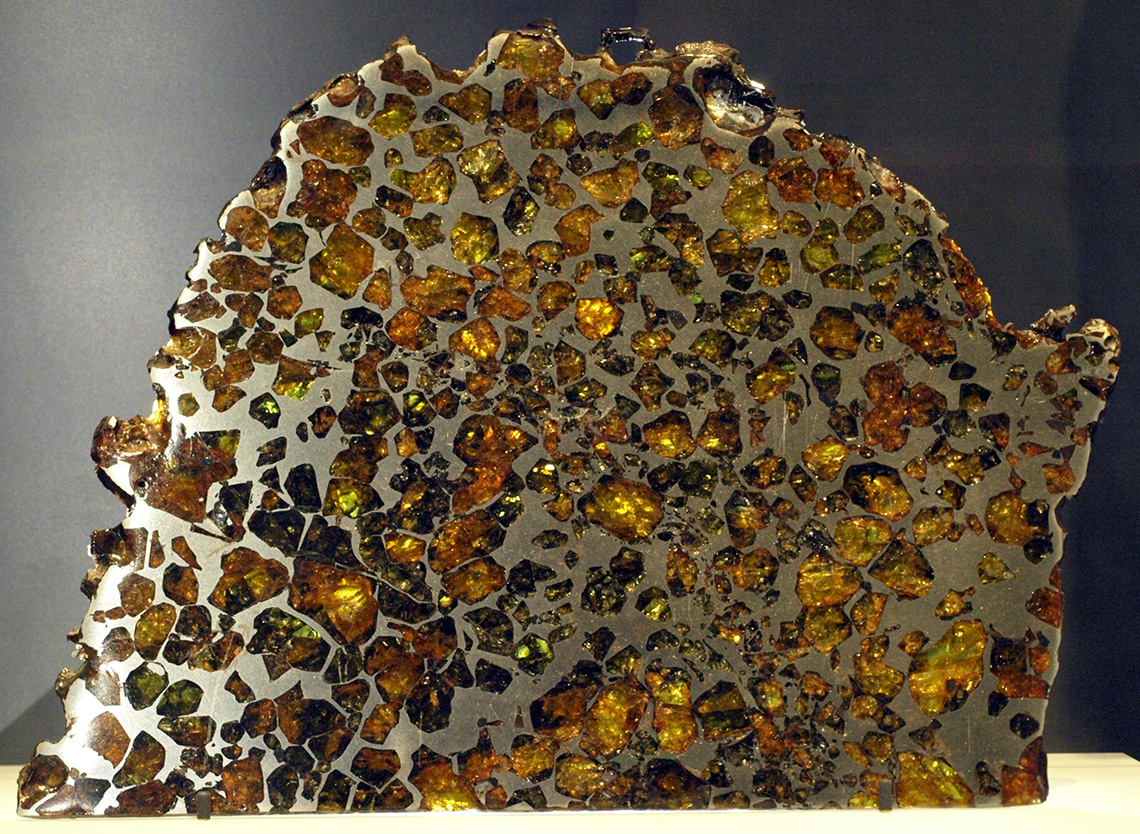Russian scientists examined a rare meteorite class of pallasites

Another of the famous Pallasites is the Fukan meteorite.
The team of scientists at the neutron physics laboratory of the Joint Institute for Nuclear Research (FLNP JINR) conducted a study of a fragment of a rare meteorite. In this case we are talking about the Seymchan meteorite. Using the method of neutron tomography, scientists were able to obtain valuable scientific information about the composition and spatial distribution of matter in this object without destroying the fragment itself.
The meteorite, part of which was examined in the laboratory, belongs to the class of pallasites - this is one of the most rare and beautiful meteorite species. The first pallasite found was the Pallas Iron meteorite. He was found near the city of Krasnoyarsk in 1749. Described the object PS Pallas in 1773 ode. In 1794, E. Chladni identified a meteorite as an extraterrestrial object.
Pallasites - a separate class in the type of iron-stone meteorites. They represent a nickel-iron base interspersed with olivine crystals. Called a class of meteorites in honor of Academician PS. Pallas, who described such meteorites as native iron, did not realize that he was dealing with an extraterrestrial object (which, of course, is excusable for the 18th century). The composition of pallasites is iron (80-90%) and nickel (3-20%). Also part of the pallasites are olivines, which have a similar structure and composition. Compared with terrestrial samples, they are depleted in calcium and nickel.
')

Processed pallasite fragment with olivine fragments
Physicists from the university's laboratory examined a fragment of a meteorite found near the village of Seymchan (Magadan Region) in 1964. According to scientists, this fragment has all types of morphology of olivine grains, as well as large metal areas. At the moment, there are several fragments of the meteorite Now. Two of them, weighing 272 and 51 kg, were discovered in the 1960s. Experts found another piece weighing about 50 kg in 2004.
“Such rare space objects require special non-destructive methods of scientific research. This way you can get quite a lot of information about their structure. The method of neutron tomography gave unique results, ”said Sergei Kichanov, a senior researcher at the FLNP JINR, in an interview with Izvestia.
The meteorite was studied in Dubna on a pulsed high-flux fast neutron reactor IBR-2. Compared with X-rays, neutron radiation allows one to penetrate deeper into the object under study. And the resulting images provide an opportunity to learn information about the internal structure of the fragment and the distribution of inhomogeneities.
Differences in the interaction of neutrons with an iron-nickel alloy and olivine grains gave scientists the opportunity to create a contrasting three-dimensional picture of meteorite components. They were able to study the distribution of nickel in the so-called metal matrix, determine the length of the metal "veins", examine the distribution of grains of olivine in size and volume.
“According to the results of our research, a scientific publication was sent to the international journal Meteoritics & Planetary Science, which should attract the attention of the international meteorite community to structural studies of the Seymchan meteorite,” said Sergey Kichanov.
Colleagues of physicists from the Joint Institute for Nuclear Research agree that the object chosen for study is very interesting for science. “These are interesting objects. They are also called the Pallas Iron in honor of Academician Pallas, who found the first iron-stone meteorite in the vicinity of Krasnoyarsk. Seymchan is perhaps the most famous of them, ”said Faina Rubleva, scientific director of the Moscow Planetarium.
“I can confirm that the object of study is quite interesting, and the method of neutron tomography is standard. It is widely used for a wide variety of objects, including geological samples, ”said Alexander Rodin, head of the laboratory of applied infrared spectroscopy at MIPT, who commented on the research. In his opinion, the results of the study will help to understand the formation of pallasites from asteroids.
Source: https://habr.com/ru/post/411077/
All Articles